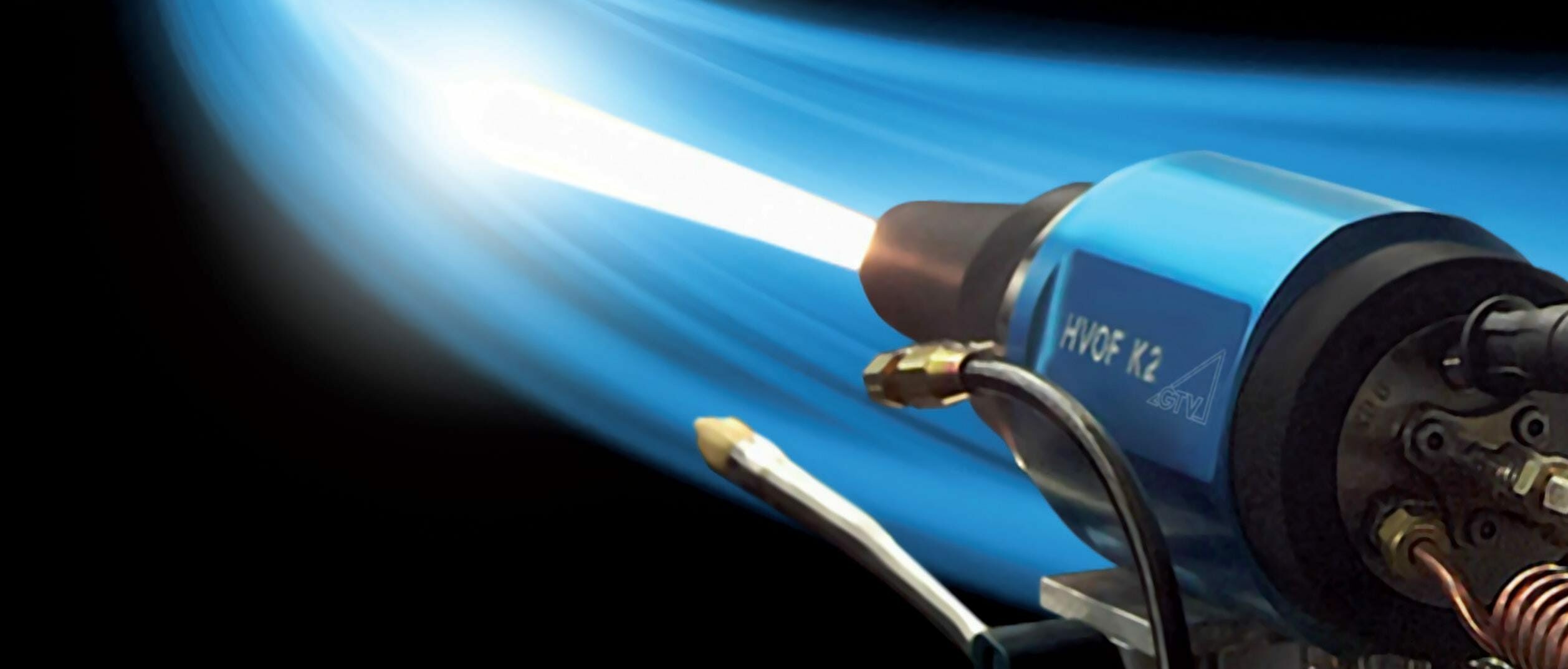Metal coating
Mainly used to improve the wear and corrosion resistance of basic materials and as repair layers.

Metal coating is a thermal spray process during which the metallic spray powder is sprayed onto the component. With the thermal spraying process (EN 657 and ISO 14917 classify the processes according to the energy source), numerous applications are possible, utilizing the advantages (little heat input, functional surfaces, broad material selection, etc. reworking instead of new part production).
Metal coating by means of thermal spraying to components offers many advantages
- Pure metals are used as corrosion protection, e.g. in lake and sear water environments. Metal coatings have very good wear and excellent emergency running characteristics.
- Thermally sprayed, steels and alloys are used as repair layers (similar structure). Apart from that, such metal coatings distinguish themselves by good corrosion and wear resistance.
- Self-flowing alloys offer corrosion protection, oxidation protection as well as wear protection. By means of melting, gas- and liquid-tight layers can be achieved which how excellent resistance to all types of wear and withstand highest mechanical loads.
- Non-ferrous metals are perfectly suited e.g. as repair layer. Thermally sprayed non-ferrous alloys distinguish themselves e.g. By good heat shock and corrosion resistance, also with excellent adhesive strengths.
- Hard metals offer excellent wear resistance to numerous types of mechanical wear and very good corrosion resistance also at higher temperatures. Hard metal coatings are excellent alternatives to hard chromium coatings.
- Pseudo alloys are thermally sprayed and distinguish themselves by self-lubricating properties (e.g. Ni graphite), very good wear resistance (e.g. ceramic metal) or good anti-adhesion properties (e.g. metal plastic).
Thermal spraying to precise specifications
If the surface needs to have properties equivalent to those of metals, carbides or ceramics, these are applied using the thermal spraying process. In this way, coatings can be applied partially or all round to different base materials. Various coating processes are used in modern surface treatment techniques. For metal, carbide and ceramic coatings, it is important to choose the right process. We successfully use the following processes:
- Atmospheric plasma spraying (also internal torch)
- HVOF high-speed flame spraying (with gas and paraffin)
- Powder flame spraying (also fusion)
- Wire flame spraying (also with internal torch)
- Electric arc spraying

Ceramic coating
Thermally sprayed oxide ceramics offer excellent corrosion and very good wear resistance.

Ceramic coating is a thermal spray process during which the ceramic spray powder is sprayed onto the component. With the thermal spraying process (EN 657 and ISO 14917 classify the processes according to the energy source), numerous applications are possible, utilizing the advantages (little heat input, functional surfaces, broad material selection, etc. reworking instead of new part production).
Ceramic coating by means of thermal spraying to components offers many advantages
Ceramics can be used for numerous applications, as protective layers against wear, as electric insulating layers and anti-static discharge layers and also as heat insulating layers. Due to bad wettability caused by metallic melts, melting pots are, amongst others, also clad with ceramic coating. Thermally sprayed oxide ceramics distinguish themselves by excellent corrosion resistance and very good wear resistance.
